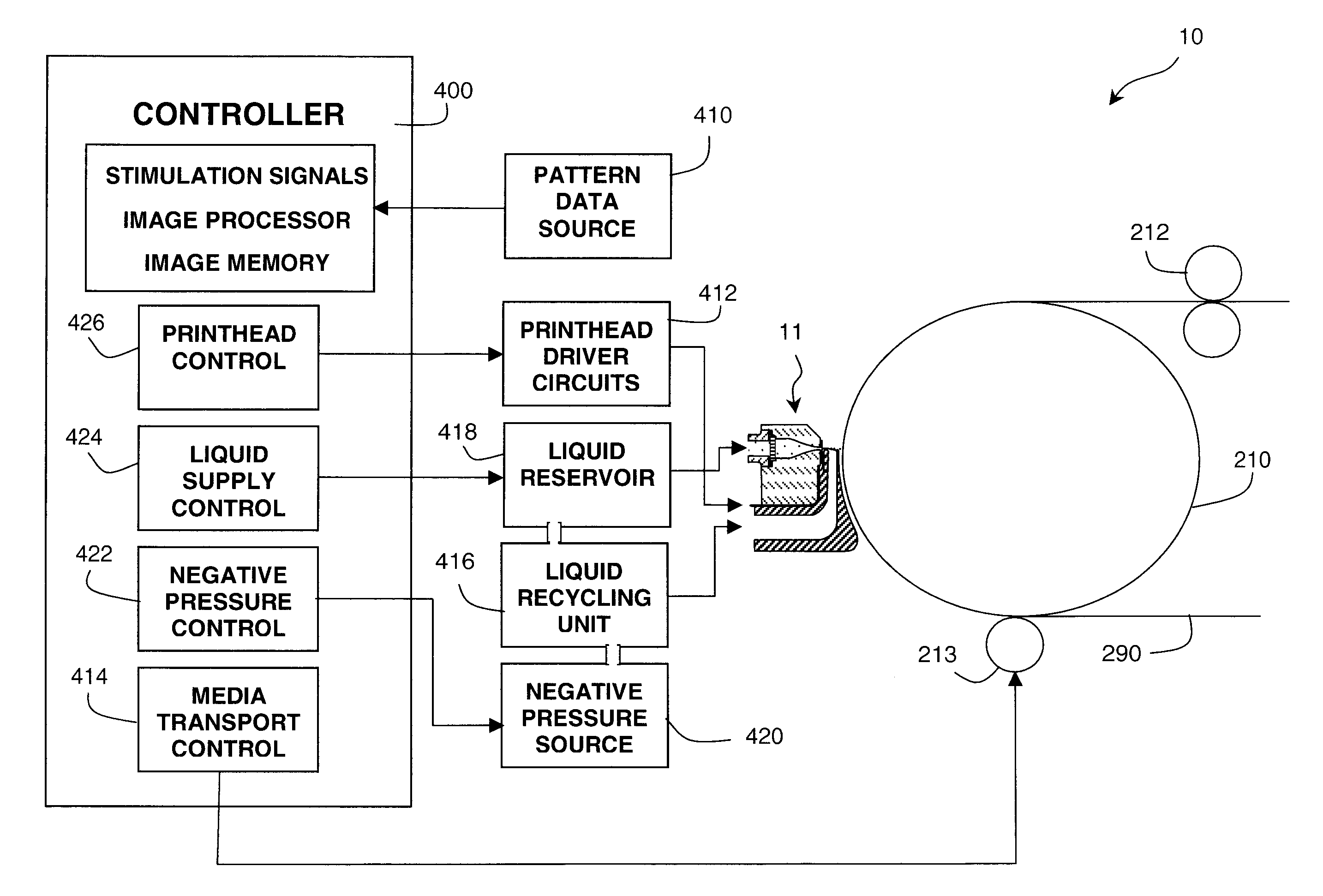Aerodynamic error reduction for liquid drop emitters
a drop emitter and liquid drop technology, applied in the direction of printing, inking apparatus, etc., can solve the problems of not being completely predictable, affecting the volume of drops intended for printing or patterning, and a large number of jets, and achieve the effect of reducing errors and high speed
- Summary
- Abstract
- Description
- Claims
- Application Information
AI Technical Summary
Benefits of technology
Problems solved by technology
Method used
Image
Examples
Embodiment Construction
[0063]The present description is directed in particular to elements forming part of, or cooperating more directly with, apparatus in accordance with the invention. Functional elements and features have been given the same numerical labels in the figures if they are the same element or perform the same function for purposes of understanding the present invention. It is to be understood that elements not specifically shown or described may take various forms well known to those skilled in the art.
[0064]Referring to FIGS. 1 and 2, a continuous drop deposition apparatus 10 for depositing a liquid pattern is illustrated. Typically such systems are ink jet printers and the liquid pattern is an image printed on a receiver sheet or web. However, other liquid patterns may be deposited by the system illustrated including, for example, masking and chemical initiator layers for manufacturing processes. For the purposes of understanding the present invention the terms “liquid” and “ink” will be ...
PUM
 Login to View More
Login to View More Abstract
Description
Claims
Application Information
 Login to View More
Login to View More - R&D
- Intellectual Property
- Life Sciences
- Materials
- Tech Scout
- Unparalleled Data Quality
- Higher Quality Content
- 60% Fewer Hallucinations
Browse by: Latest US Patents, China's latest patents, Technical Efficacy Thesaurus, Application Domain, Technology Topic, Popular Technical Reports.
© 2025 PatSnap. All rights reserved.Legal|Privacy policy|Modern Slavery Act Transparency Statement|Sitemap|About US| Contact US: help@patsnap.com



